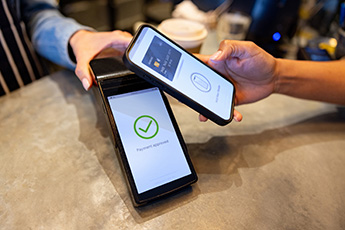American consumers seem to be mixed on the economy right now. While 70% feel we are in a recession, 48% believe things will get better over the next six months, according to Gallup. How this influences their behavior will play out in the next few months. In the meantime, we wanted to bring you some highlights of recent COVID-19 consumer behavior changes.
Practical & conservative spending. The Commerce Department reported that in March consumer spending dropped 7.5%. At the same time, it reported that personal income decreased by 2%, the largest decrease since 2013, as employers started to lay off workers.
Davis Research and CCG uncovered that in week six of this crisis (ending April 25), spending habits have changed somewhat dramatically, focusing somewhat more on buying essential goods than splurges. Needless to say, there haven't been as many opportunities to splurge either with theaters, many restaurants, bars, hotels, and retail shops closed.
Contactless payments have become much more important as people try to avoid potentially germ-laden surfaces, including cash and credit cards. Mastercard contactless payments rose 40% in Q1.
Boosted savings. An increase in consumer caution has pushed the personal-saving rate to 13.1% in March up from February at 8%, the highest rate since 1981 when it was 13.2%. People are more worried about job security and so many are buckling down putting as much as possible aside for that potentially imminent "rainy day."
Adapted branch banking. With most people at home (either working or unemployed), branch banking services have been limited. Call center demand has skyrocketed. Wait times have increased too, sometimes up to 17.5 minutes, especially with the onslaught of PPP loans, refinancing and loan modification requests. While there are drive-up and ATM services still being accessed, many people feel safer handling banking services from their homes.
More digital banking. No real surprise here as digital banking use by consumers increased during the shelter-in-place orders due to COVID-19. J.D. Power reported that as of April 5th, 30% of consumers surveyed were using mobile banking more often and 35% were using online banking more than before the coronavirus. 6% of those surveyed said they were first-time mobile banking users and 4% were first-timers of online banking. Wells Fargo also reports that remote check deposits have skyrocketed. The total dollar amount increased 50% and the number of checks deposited went up 40%.
With all of these changes, 46% of those surveyed by J.D. Power said they would still go back to the way they did things before the coronavirus when this was all over. However, even as businesses start to open, there will be a difference in how they are serving their customers. Will that push behavioral changes to be more permanent? At the end of the day, we are in uncharted territory and we will continue to learn as we recover.




